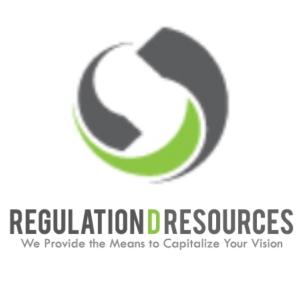Regulation D Resources : What it is
Regulation D Resources: What It Is and How It Can Benefit You Introduction: If you are involved in the world of finance and investments, you have likely heard of Regulation D (Reg D). Reg D is a set of rules and regulations established by the United States Securities and Exchange Commission (SEC) under the Securities Act of 1933. These regulations offer exemptions to certain issuers from registering their securities offerings with the SEC, making them attractive options for companies seeking to raise capital in a private offering. In this post, we will delve into the world of Regulation D resources. We will explore what Reg D entails, how it can benefit you as an investor or an issuer, and provide you with valuable information to navigate this regulatory framework effectively. 1. Understanding Regulation D: Regulation D is a key component of the Securities Act of 1933, which regulates the offer and sale of securities in the United States. The primary goal of Reg D is to provide exemptions from the registration requirements for smaller companies to raise capital without having to go through the rigorous and costly process of a full SEC registration. 1.1 What is Reg D? Regulation D provides three main exemptions for issuers: Rule 504, Rule 506(b), and Rule 506(c). Each of these exemptions has its own requirements and limitations. While Rule 504 permits issuers to raise up to $5 million in any twelve-month period, Rules 506(b) and 506(c) apply to offerings over $5 million and allow issuers to solicit investments from accredited investors. 1.2 Eligibility Requirements: To take advantage of the Reg D exemptions, issuers must meet certain eligibility criteria. These requirements include limitations on general solicitation and the number of non-accredited investors, among others. 2. Benefits of Reg D: Regulation D offers numerous benefits to both issuers and investors. Let's explore some of these advantages in detail. 2.1 Access to Capital: For issuers, the primary benefit of Regulation D is access to capital. Raising funds through private offerings can be quicker and less expensive compared to public offerings. Moreover, the exemptions provided by Reg D allow issuers to raise capital from a broader range of investors, including accredited investors, enhancing their chances of success. 2.2 Flexibility in Investment Strategies: Reg D offers investors increased flexibility in investment strategies. Accredited investors, which include high-net-worth individuals and institutional investors, gain access to a wider range of investment opportunities. Additionally, Reg D enables investors to diversify their portfolio by investing in private offerings, which traditionally have higher potential returns compared to publicly-traded securities. 2.3 Reduced Regulatory Burden: One of the most significant advantages of Reg D for issuers is the reduced regulatory burden. While the process of registering securities with the SEC can be time-consuming and expensive, Regulation D exemptions allow issuers to avoid these requirements. This reduction in regulatory burden enables issuers to focus on their core business operations, saving time and resources. 3. Exploring Reg D Resources: Now that we understand the basics of Regulation D, let's explore some valuable resources that can help you navigate this regulatory framework effectively. 3.1 The SEC Website: The SEC's official website serves as a comprehensive resource for Regulation D. It provides detailed information about the different exemptions, eligibility requirements, and filing procedures. Additionally, the SEC website offers guidance documents, forms, and frequently asked questions (FAQs) to assist issuers and investors in understanding and complying with Reg D. 3.2 Legal and Financial Advisors: Engaging legal and financial advisors who specialize in securities laws and Regulation D can be a valuable resource. These professionals can provide expert guidance on compliance, help prepare offering documents, and ensure that issuers and investors understand their rights and responsibilities under Reg D. 3.3 Educational Webinars and Seminars: Various organizations, including law firms, financial institutions, and industry associations, conduct educational webinars and seminars on Regulation D. These events offer in-depth insights, case studies, and practical tips for navigating the complexities of Reg D. Attending such sessions can enhance your knowledge and help you stay updated with the latest developments in this regulatory field. FAQ - Frequently Asked Questions: To further assist you, we have compiled some frequently asked questions about Regulation D. Q1. Can non-accredited investors participate in Reg D offerings? A1. While Rule 504 permits unlimited participation from non-accredited investors, Rule 506(b) allows issuers to have a maximum of 35 non-accredited investors. Rule 506(c), on the other hand, restricts participation to accredited investors only. Q2. Are Reg D offerings limited to specific industries? A2. No, Reg D offerings are not industry-specific. They apply to a wide range of industries, including technology, real estate, healthcare, and more. Q3. Do Reg D offerings require ongoing reporting to the SEC? A3. Unlike publicly-traded securities, Reg D offerings are exempt from ongoing reporting requirements. However, issuers must still comply with anti-fraud provisions. Conclusion: Regulation D resources play a crucial role in helping investors and issuers understand and navigate the complex world of private securities offerings. By utilizing these resources, individuals can seize the benefits offered by Reg D, such as access to capital, investment flexibility, and reduced regulatory burden. Remember, while Reg D provides valuable exemptions, it is important to seek professional advice and conduct thorough due diligence before engaging in any private offerings. By doing so, you can maximize your success and mitigate potential risks within the regulatory framework of Regulation D.  Image Source : www.koreconx.com
Image Source : www.koreconx.com  Image Source : www.crunchbase.com
Image Source : www.crunchbase.com  Image Source : regdresources.com
Image Source : regdresources.com  Image Source : pa.linkedin.com
Image Source : pa.linkedin.com  Image Source : www.pinterest.com
Image Source : www.pinterest.com  Image Source : wimgo.com
Image Source : wimgo.com  Image Source : regdresources.com
Image Source : regdresources.com  Image Source : regdresources.com
Image Source : regdresources.com
KorePartner Spotlight: Douglas Ruark, Founder And President Of
 Image Source : www.koreconx.com
Image Source : www.koreconx.com Regulation D Resources
 Image Source : www.crunchbase.com
Image Source : www.crunchbase.com Regulation D Resources - News Blog
 Image Source : regdresources.com
Image Source : regdresources.com Regulation D Resources | LinkedIn
 Image Source : pa.linkedin.com
Image Source : pa.linkedin.com Regulation D Resources In 2022 | Fundraising Campaign, Raising Capital
 Image Source : www.pinterest.com
Image Source : www.pinterest.com Regulation D Resources – Wimgo
 Image Source : wimgo.com
Image Source : wimgo.com Regulation D Resources - News Blog
 Image Source : regdresources.com
Image Source : regdresources.com Regulation D Resources - News Blog
 Image Source : regdresources.com
Image Source : regdresources.com Regulation d resources. Korepartner spotlight: douglas ruark, founder and president of. Regulation d resources in 2022. Regulation d resources – wimgo. Regulation d resources